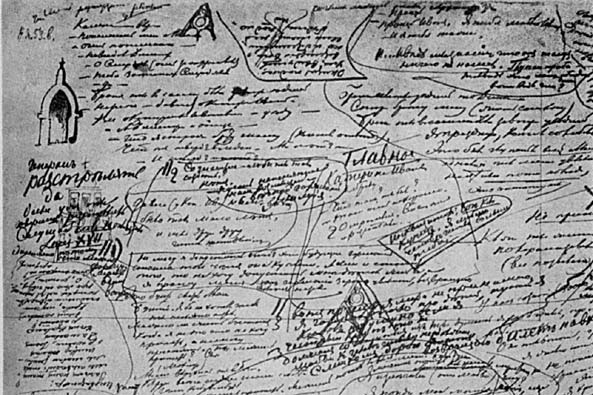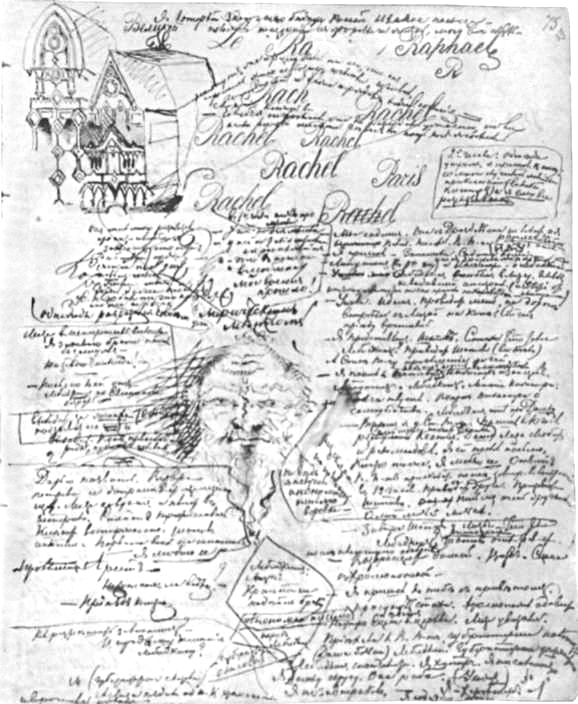Mind Mapping Dostoevsky
By Peter LloydIn the winter, I find great pleasure wallowing in the dark depths of Dostoevsky. This winter, it’s another visit with The Brothers Karamazov. I took up trying to learn Russian, so that someday I might read Fyodor D. in the original. That joy remains a long way off. But that’s how much I love Dostoevsky.
Looking into the Dostoevskian creative process, I discovered a couple of mind maps. I’d be interested to know if Tony Buzan, the proponent and popularizer of the contemporary mind mapping process,
 would call Fyodor’s diagramed notes mind maps.
would call Fyodor’s diagramed notes mind maps.With the mind map at left, Fyodor planned The Brothers Karamazov. Somewhat of a visual thinker, he even included a drawing of what looks like some sort of grotto. Not having read the rules of modern-day mind mapping, Dostoevsky still did a pretty good job of demonstrating them.
However, according to Buzan’s Mind map guidelines, Fyodor should have positioned his main image in the center. But we’ll give the great Russian author a pass for that and for possibly not having the recommended three colors of writing instruments handy to use as guideline number one of ten prescribes.
 I can tell, if you can’t, that Dostoevsky did follow the guideline to “Select key words and print using upper or lower case letters.” That is, if it’s okay to “print” in cursive. But he neglected to make sure that “Each word/image is best alone and sitting on its own line.” Nor do I see rule number five at work: “The lines should be connected, starting from the central image. The central lines are thicker, organic and thinner as they radiate out from the centre.”
I can tell, if you can’t, that Dostoevsky did follow the guideline to “Select key words and print using upper or lower case letters.” That is, if it’s okay to “print” in cursive. But he neglected to make sure that “Each word/image is best alone and sitting on its own line.” Nor do I see rule number five at work: “The lines should be connected, starting from the central image. The central lines are thicker, organic and thinner as they radiate out from the centre.”Nevertheless Fyodor makes a strong and clear case for the eighth guideline, “Develop your own personal style of mind mapping.” Which I argue should be the first, if not the only mind mapping guideline. Just look at the way he mapped out The Possessed, at right.
There’s nothing new about mind mapping, because there’s nothing new about creativity. Check out Leonardo da Vinci’s invention illustrations. While the step-by-step process enumerated by Buzan and others comes off much too prescriptive for me, the concept behind the method stands solid. Mind maps represent ideas and information more like the way the brain itself does. As opposed to outlines and other linear representations.
Peter Lloyd is co-creator with Stephen Grossman of Animal Crackers, the breakthrough problem-solving tool designed to crack your toughest problems.
Right Brain Workouts Explained
